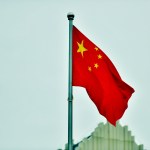Mobile communications has already changed the way we live and work and now, as we usher in a new era of disruptive technologies like Internet of Things (IoT), HD video, cloud computing and Smart Cities, the industry is now focused on the next step. But with one billion people remaining unconnected to any form of telecommunications – according to estimates based on ITU and GSMA data – are we moving too quickly? At the Huawei Global Mobile Broadband Forum 2015, industry leaders came together to discuss how to create a more balanced and better connected world.
The New Digital Divide
As more networks are built, more Internet connections are made available and the proliferation of Smartphones continues, the digital divide has undoubtedly become narrower. But, as highlighted by a new report compiled by Huawei and the GSMA, up to one billion people remain completely unconnected. This means the digital divide is actually deepening, with new and increasingly innovative technologies making the difference between those with Inte rnet access and those without it much more dramatic. Furthermore, only a third of people living in developing counties use the Internet, meaning millions are missing out on access to vital services. This creates not just a digital divide but also an economic and social one.
So, how does the industry begin to overcome this? Ken Hu attempted to answer this question at Huawei’s sixth Global Mobile Broadband Forum, which was held at the AsiaWorld-Expo in Hong Kong from Tuesday, November 3 to Wednesday, November 4. Revealing Huawei’s Mobile Broadband 2020 strategy for the first time, he said connecting people is still a top priority.
“We need to focus on bridging the new digital divide,” said Hu. “While more than 87 per cent of the world’s population is within range of a mobile signal, there are still billions of people who remain without a phone service and without the Internet. Unfortunately, most of these people live in developing countries and compared to people in developed countries, these people lack access to education, healthcare services – the list goes on. This is deepening the digital divide around the world and mobile communications can play a significant part in decreasing this.”
Hu went on to say that overcoming the digital divide and driving adoption around the world relies on ongoing technical innovation in the infrastructure. At same time, he hopes more spectrum resource will be made available for mobile communications services to further subsidise the development in regions currently unconnected.
Quality is King
Of course, the quality of connectivity is just as important as providing people with access to content and services – which is why Hu highlighted a better user experience as another key priority.
“There&rsqu o;s a reason we need to focus on better user experience,” Hu continued. “Consumers are constantly demanding more – they want HD voice and video, they always want to be connected with information, no matter where they are and they want the way in which they are connected to be faster, simpler, cheaper and, of course, more enjoyable. All of this presents new opportunities and new challenges for our industry.”
A number of technologies, such as LTE, have already been introduced to achieve this but, according to Hu, to truly succeed the industry needs to change the way it thinks about network planning and operation. In other words, operators need to move their focus from the networks to the users by developing a set of user experience indicators in addition to standard Key Performance Indicators (KPIs).
“All these indicators should be definable, measurable, manageable and, eventually, monetised,” added Hu. “At Huawei this is user-based mobile optimisation and we are very excited that many customers have already started working with us to make it a reality.”
The IoT Revolution
Beyond connecting people, providing Internet access to objects is also creating huge opportunities for the mobile industry. The IoT trend is progressively bringing about larger-scale requirements for the mobile network and this is only set to continue, with initiatives like Smart Cities growing in popularity. The impact IoT is expected to have was highlighted by this year’s Global Mobile Broadband Forum audience which – for the first time – included delegates from vertical industries, such as Internet services, financial services, media services and manufacturers. The resonance IoT will bring is expected to be felt by all those industries and many more.
“Indeed, IoT is driving another revolution for the whole so ciety,” continued Hu. “All these technologies require network connectivity and telecoms has a unique advantage here but there are also many other technologies that are developing rapidly, for instance, Bluetooth and Wi-Fi. This is likely to generate more competition in the IoT market. This means the telecoms industry is standing at a critical junction and we need to act now in order to open up the new opportunities this trend has the potential to bring.”
One area which Hu highlighted as needing development particularly quickly is IoT standards, with Vodafone and Deutsche Telecom both mentioned as examples of operators already taking action. The latter, for example, performed a field trial with narrowband technology on its existing architecture which Hu described as very successful.
“Now we need to speed up the process of making narrowband IoT the standard,” he said. “If managed in the traditional way, the cost of connections will be huge and unacceptable. We believe that the cost of communications margins have to be lowered in order to stimulate large scale development. If we can lower the cost to less than one us dollar, it will lead to an explosion.”
The Next Step
Hu’s calls for more spectrum, standardisation and innovation to open the road to a better connected world were echoed by the other keynote speakers at the Global Mobile Broadband Forum, which featured both a conference and exhibition. Following him on stage was Alex Sinclair, Acting Director General and Chief Technology Officer at GSMA, who said:
“Ken said it very eloquently; the real opportunity is mobilising other sectors and this is a positive disruption which is incredibly exciting. In the short term, the technology we have doesn’t fully meet needs of each particular market.”
In order to change this and fulfil the demands of different industries, Sinclair pointed to narrowband, edge computing, content delivery networks and Network Functions Virtualization (NFV) as being important. New technologies were also highlighted by Enrique Blanco, Group CTO at Telefonica, who explained the approach the company was taking to enable a better user experience.
“We have a big challenge and we need to move fast as this will be key in guaranteeing the quality for our customers,” he said. “Consumer demands are increasing all the time and we need to be ready for that – to be ready for digital life. For us, this is an obsession and at the heart of everything we are doing.”
Meanwhile, Hutchinson, one of Huawei’s customers, detailed the company’s efforts to implement Voice Over LTE (VoLTE) and Voice over Wi-Fi (VoWi-Fi) in order to provide seamless and high-speed coverage to its customers.
Conclusion
The ongoing digital transformation is creating huge opportunities for the mobile industry but the road to a better connected world is not without barriers and obstacles. Regardless, in its Mobile Broadband 2020 strategy Huawei states that by 2020 it will be able to support 6.7 MBB users globally and, in order to connect the unconnected, it aims to support the average speed of one gigabit per second. Hu provided a summary of what he thinks are the key enablers in completing this journey.
“ICT will be prime enabler and I am confident that the mobile broadband network will be the enabler of the enabler in this process,” he said. “We believe that in the next five years, the industry will embrace a huge transformation which includes HD video, Smartphones and IoT. In order to facilitate this, provide a better user experience and realise a ubiqu itous IoT network, we as an industry need to put our efforts into technology innovation, business model innovation and cross-industry collaboration.”
According to Hu, At Huawei, will play its part in this by continuing to support its customers to take advantage of the transformation through contributions to the spectrum strategy, network architecture, solutions and user-experience based operations.
Hu concluded: “We are standing at the beginning of a great era – the mobile era – and mobile technology changing the world much faster than ever before. As long as we dare to dream and work closely together we will be a better connected world.”
ABOUT THIS ARTICLE
Knowledge Network Articles enable our partners to create high value content to express a particular view or highlight an opinion in an editorial style environment on Total Telecom, they are not produced by our editors and do not reflect the views of Total Telecom. To find out about content creation opportunities for your organisation visit the information page or email info@totaltele.com

















